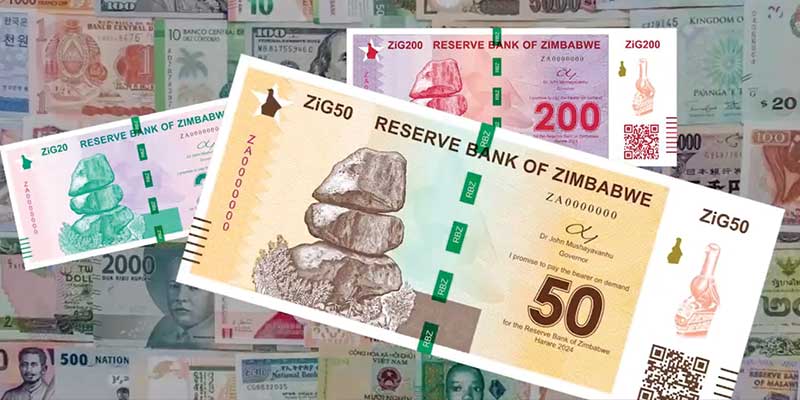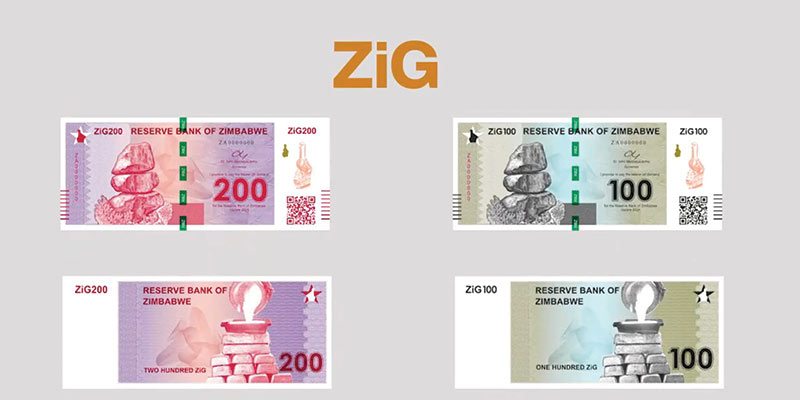- World
- May 28
Zimbabwe’s ZiG is the world’s newest currency
• Zimbabwe has rolled out a new gold-backed currency called the Zimbabwe Gold (ZiG).
• The move is aimed to mitigate the currency instability and hyperinflation that has plagued the country for decades.
• Zimbabwe has long struggled with high inflation, with inflation rates exceeding 500 per cent in recent years.
• The country grapples with fraught economic conditions as macroeconomic volatility fuelled by monetary instability and substantial exchange rate distortions keeps Zimbabwe’s economic activity below its potential.
• The country is recalibrating its monetary policy framework to re-anchor price and exchange rate stability and to boost confidence in the local currency.
• With effect from April 5, banks in Zimbabwe have been converting the country's previous national currency — the Zimbabwe dollar — into ZiGs.
• The new ZiG banknotes come in denominations of between 1 and 200.
• The new banknotes feature a drawing of gold ingots being minted, as well as Zimbabwe’s famous Balancing Rocks, which already appeared on the old ones.
Currency challenges in Zimbabwe
• Zimbabwe attained independence from the British in 1980. Since its independence in 1980, the country has had a turbulent history with its currency, including several changes and re-denominations.
• The Zimbabwean dollar was introduced in 1980, replacing the Rhodesian dollar.
• In 2008, hyperinflation peaked at staggering levels, causing the Zimbabwe dollar to lose its value and the government to abandon it in 2009.
• Zimbabwe’s central bank had even introduced a 100 trillion Zimbabwe dollar banknote at the height of the hyperinflation to keep up with spiraling prices.
• At one point, a loaf of bread cost more than 500 million Zimbabwe dollars. Prices would change from when customers walked into a grocery store to when they lined up to pay at the cash register. Restaurants stopped displaying prices on menus as they would go up over the course of a dinner. People lugged around bags stuffed with banknotes.
• Since 2009, the US dollar and other foreign currencies have been widely-used throughout the economy.
• The government in June 2019 removed the multicurrency regime and re-introduced the Zimbabwe dollar as the sole legal tender.
• In March 2020, however, the government allowed people with free funds to use their foreign currency to pay for goods and services for easier transactions following the outbreak of COVID-19.
• The use of the US dollar has since grown in the economy, with more than 70 per cent of expenditure denominated in US dollars.
• Most Zimbabweans prefer to do business, get paid and hold their savings in US dollars.
• The government has previously resorted to various expedients to stabilise the economy, including issuing gold coins and launching a gold-backed digital currency but they have yielded little results.
• It remains to be seen whether the new ZiG can gain the confidence of the public and become a stable local currency, which would allow officials to regain control over monetary policy.
• Stable currencies and reliable economic conditions are critical for developing industries and attracting foreign investments.
Manorama Yearbook app is now available on Google Play Store and iOS App Store


